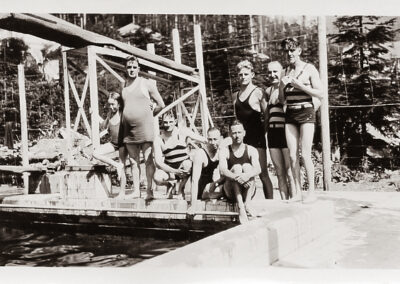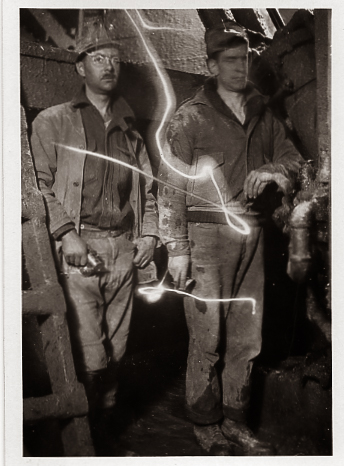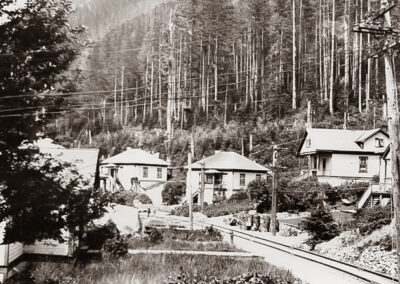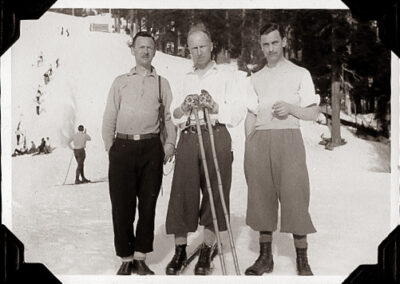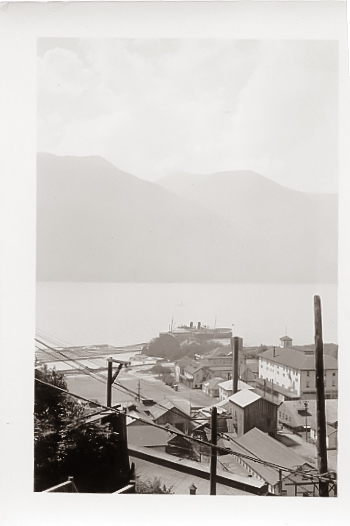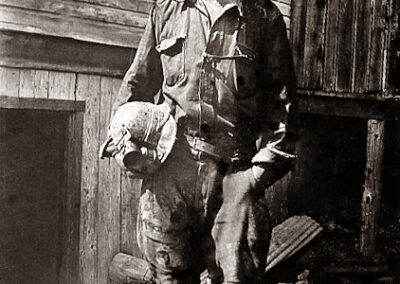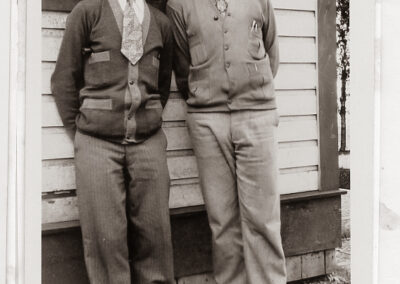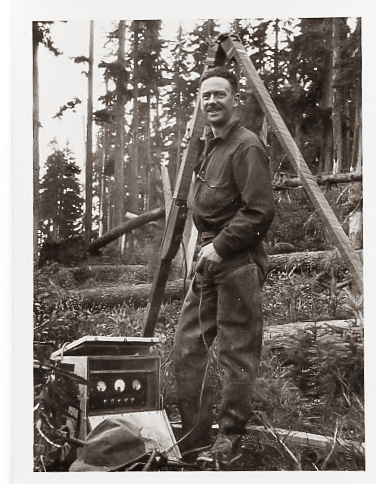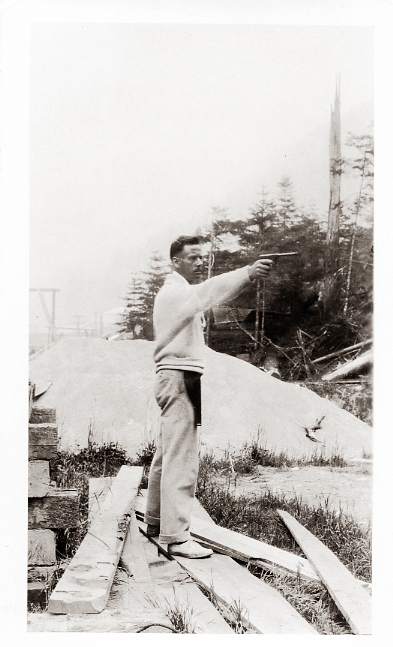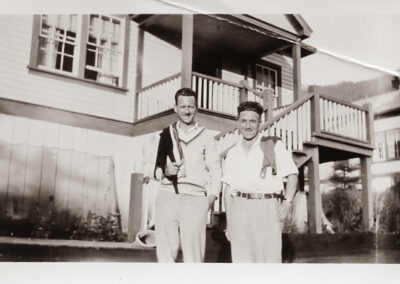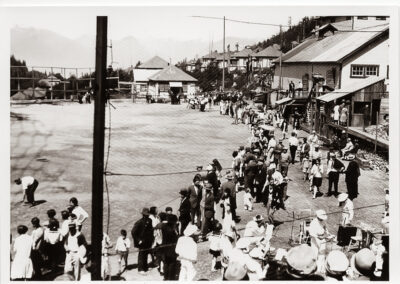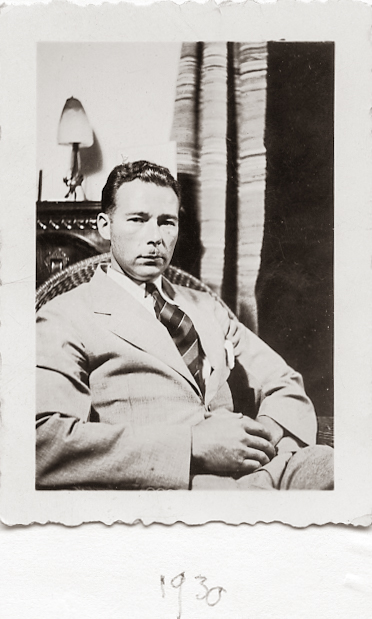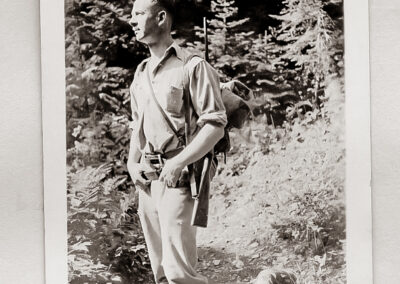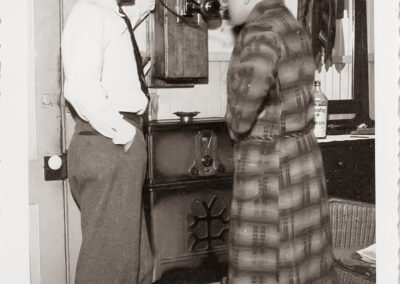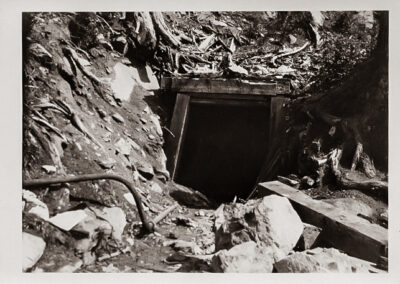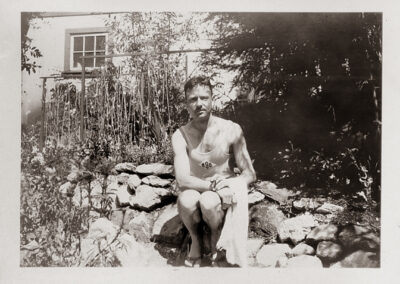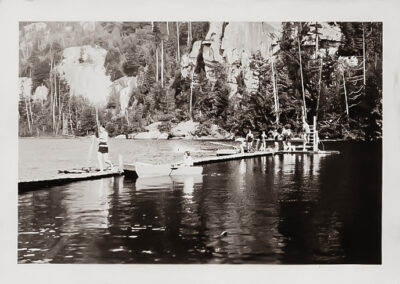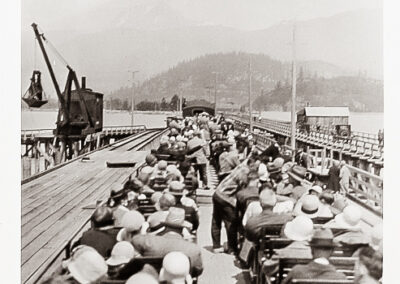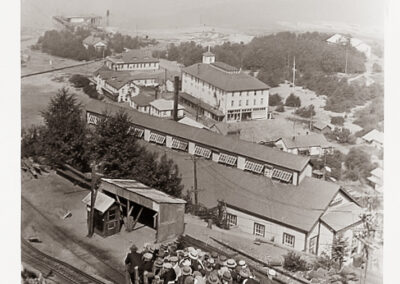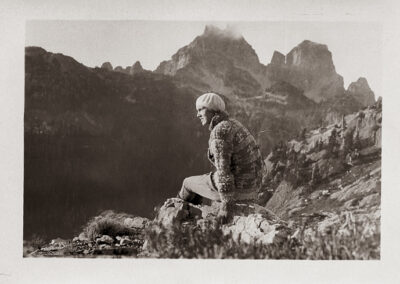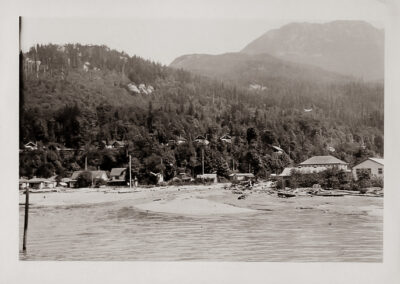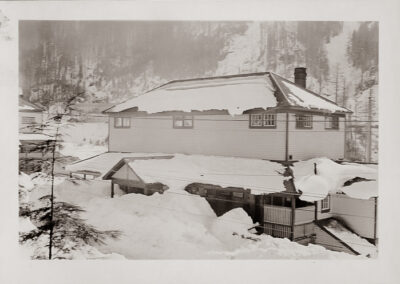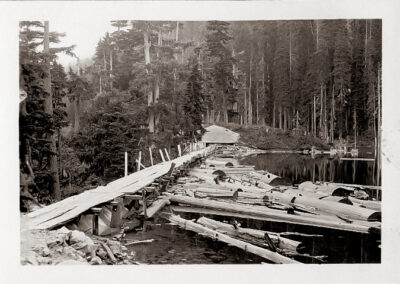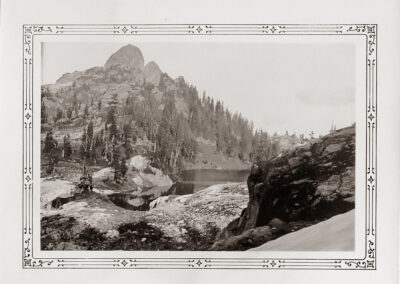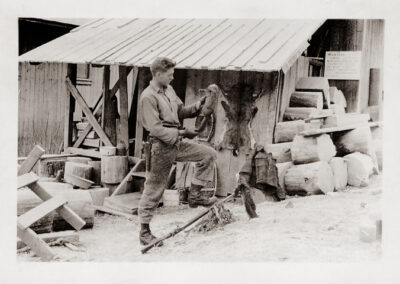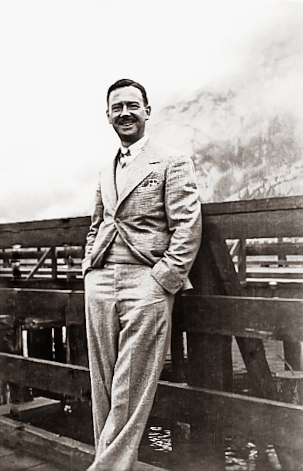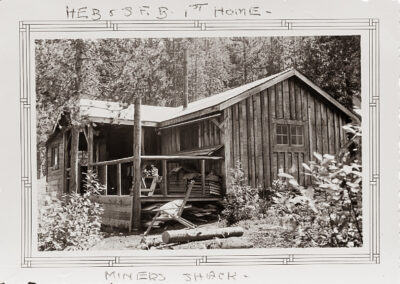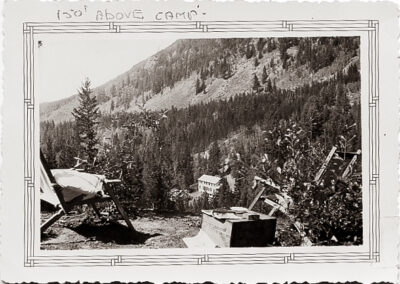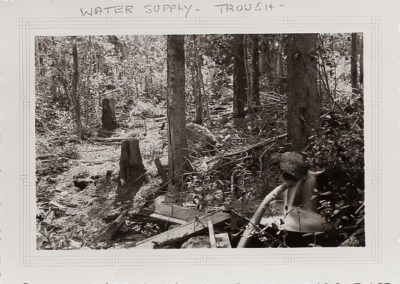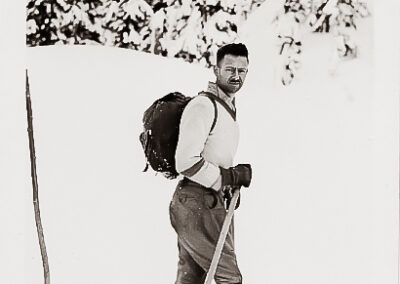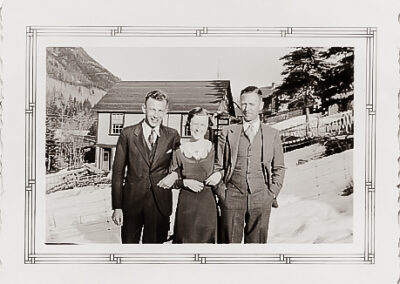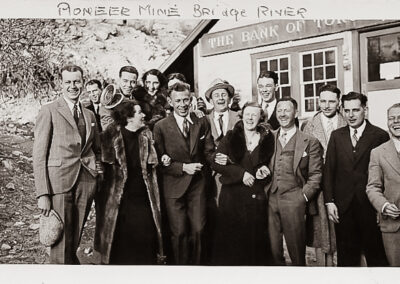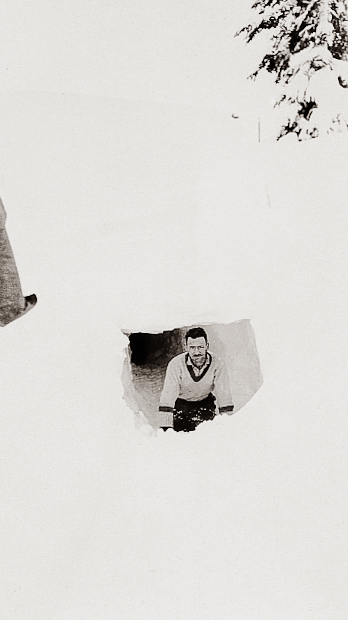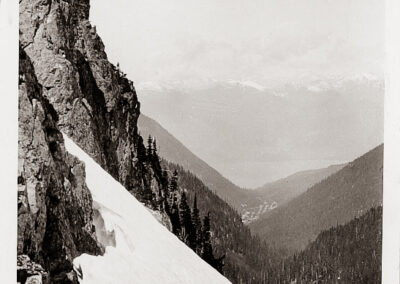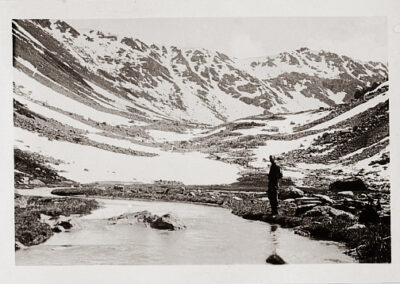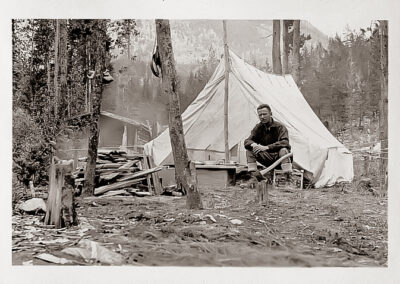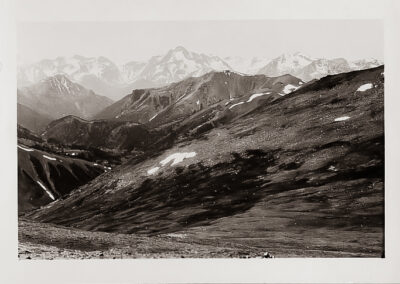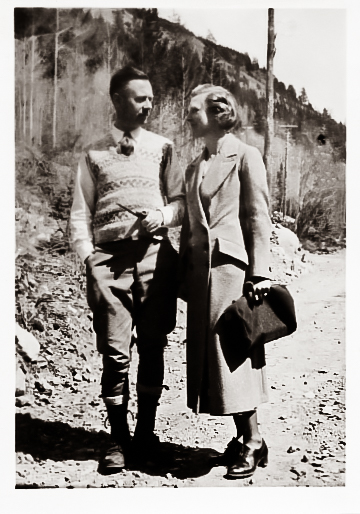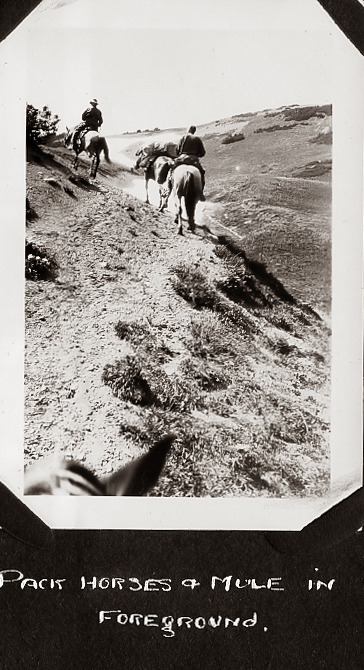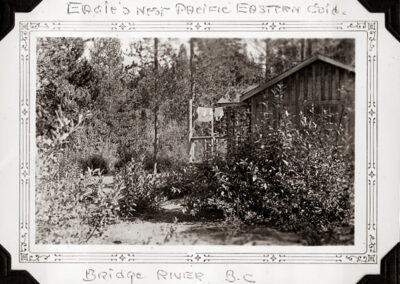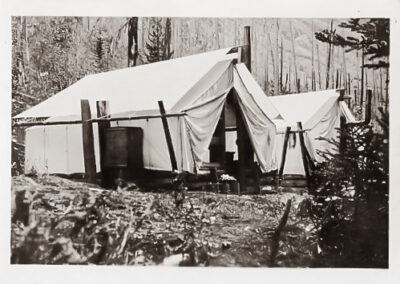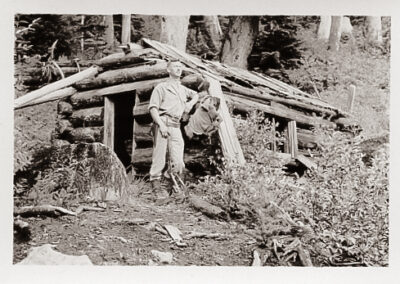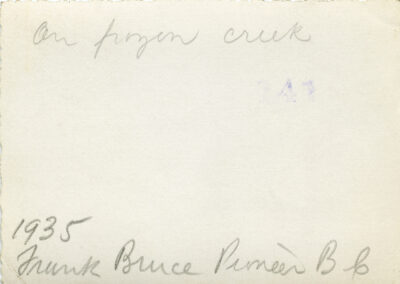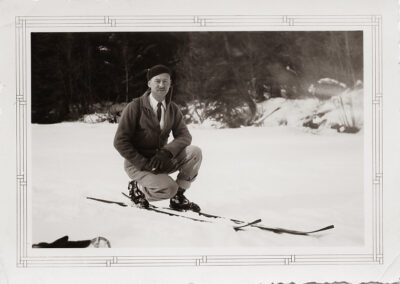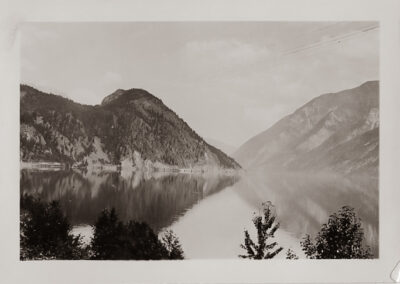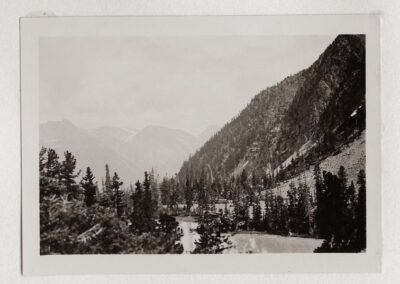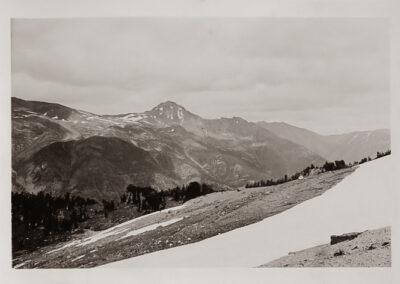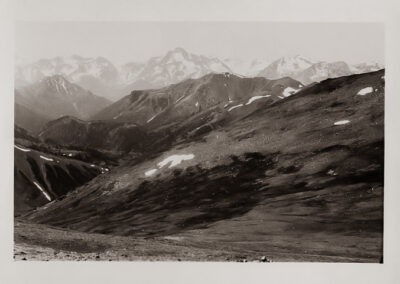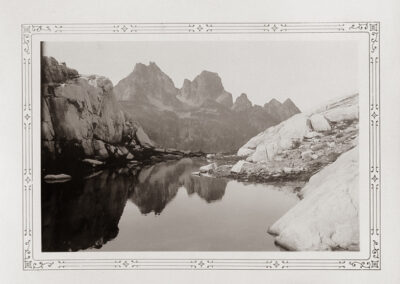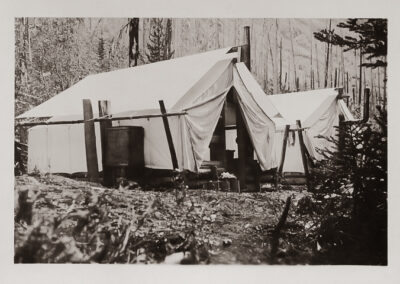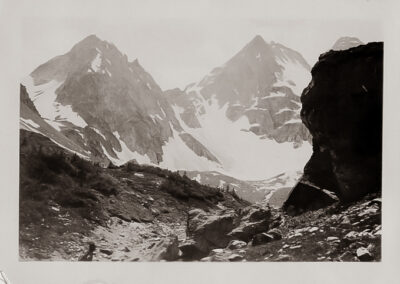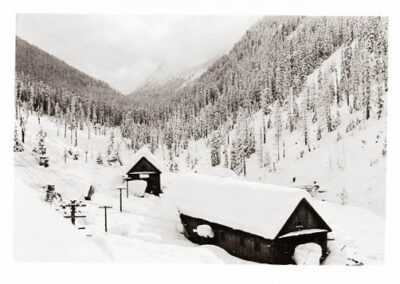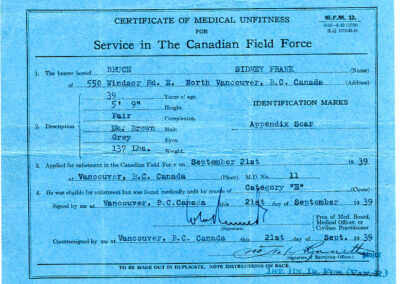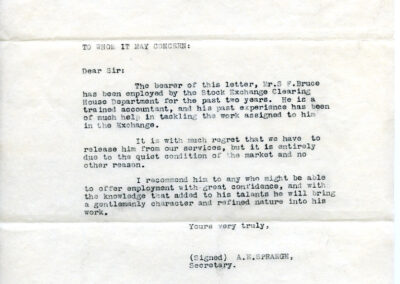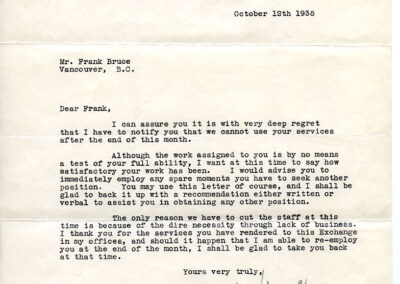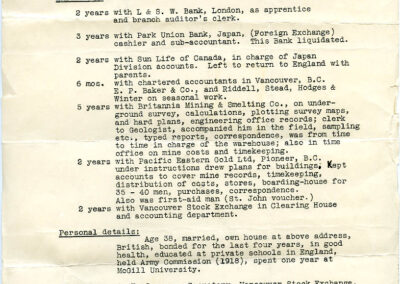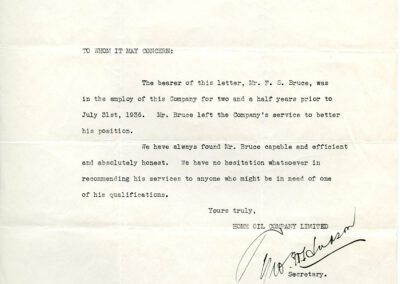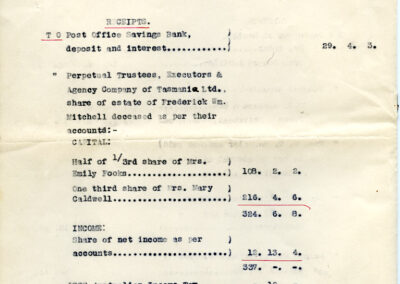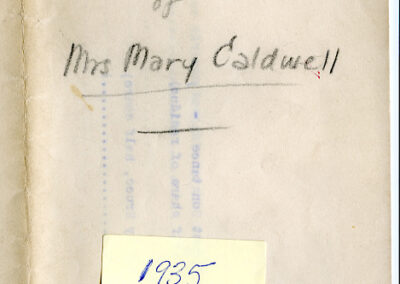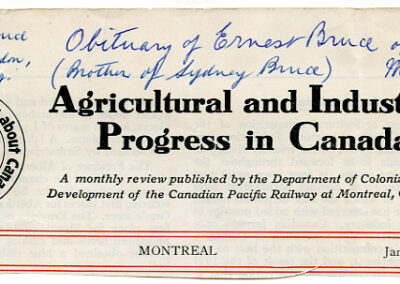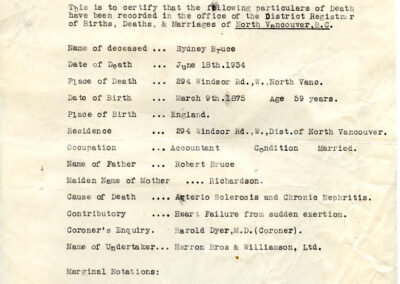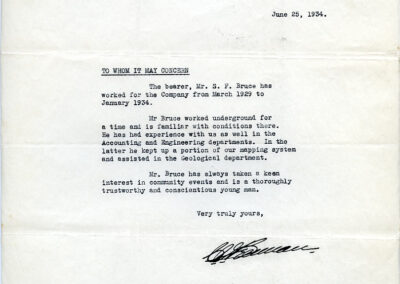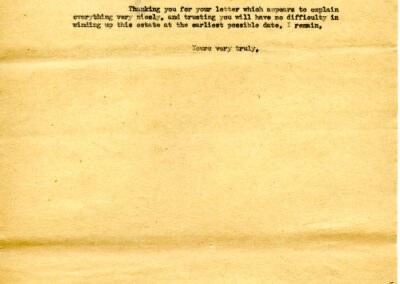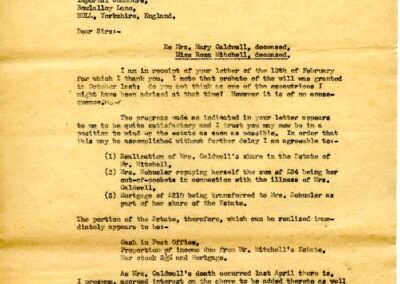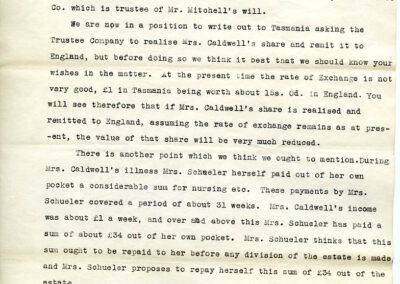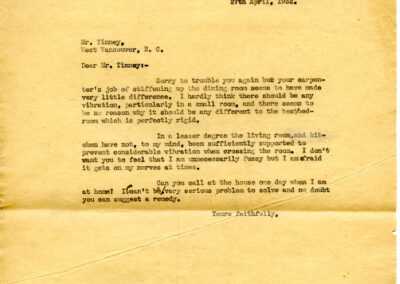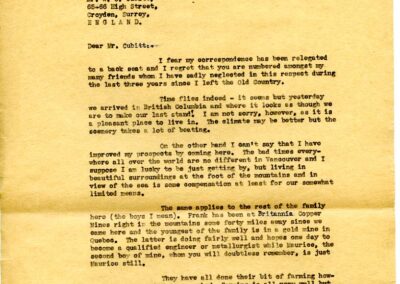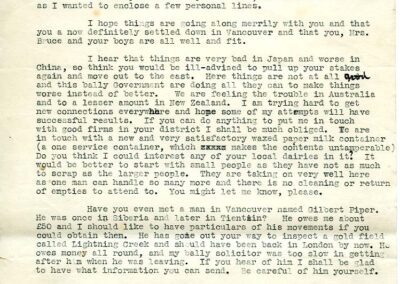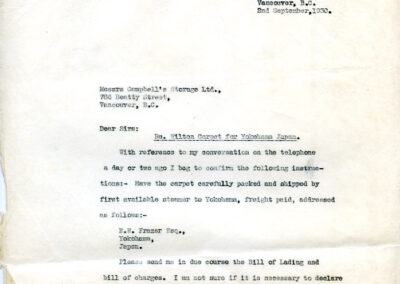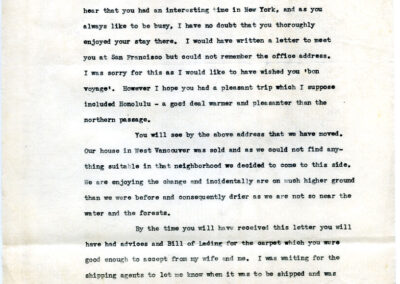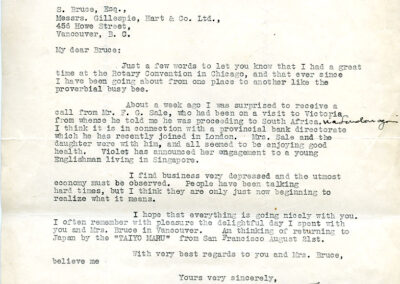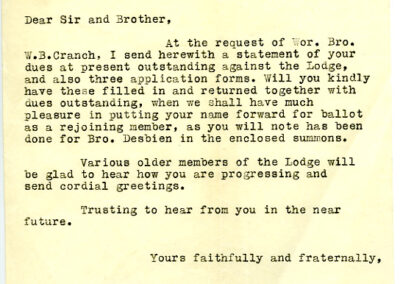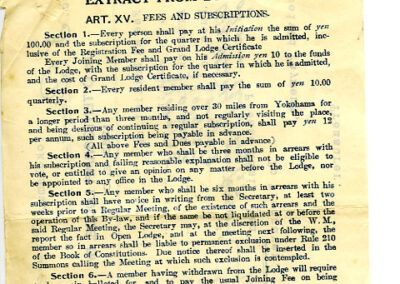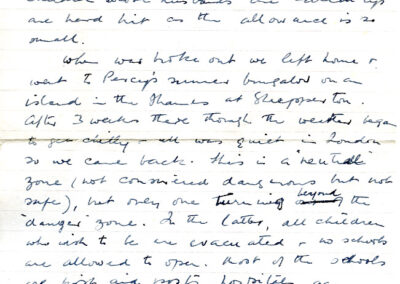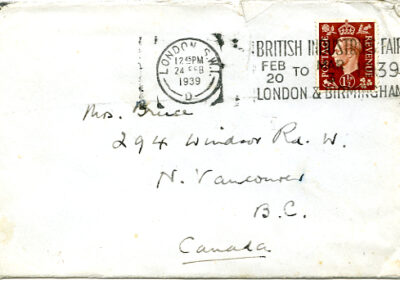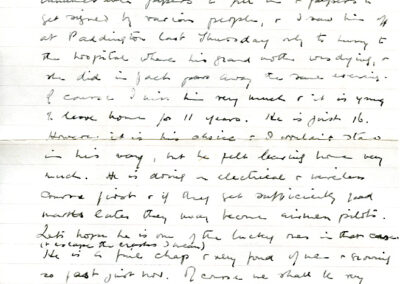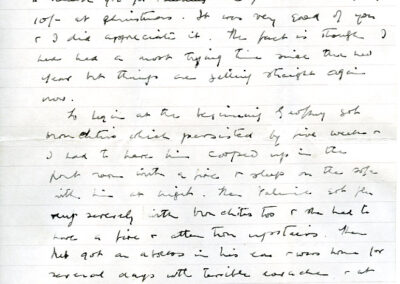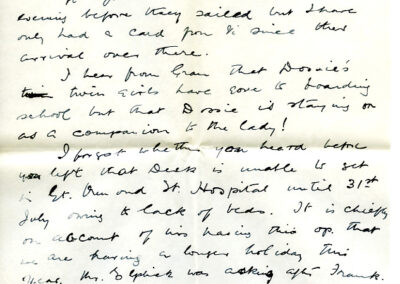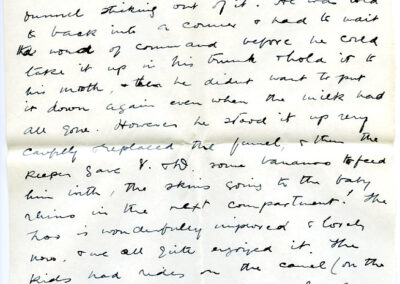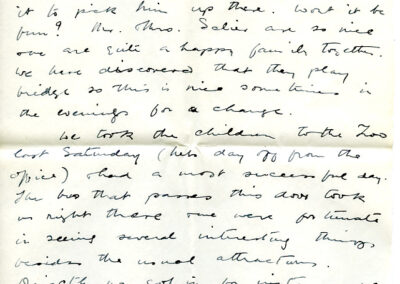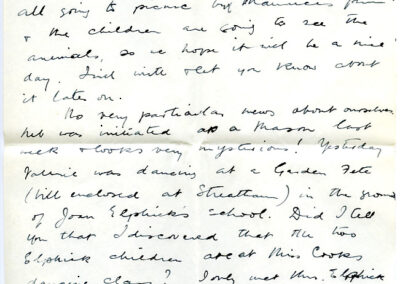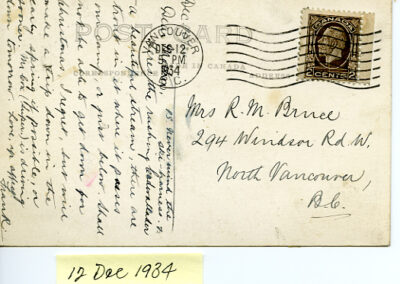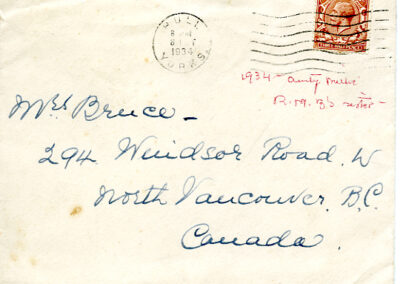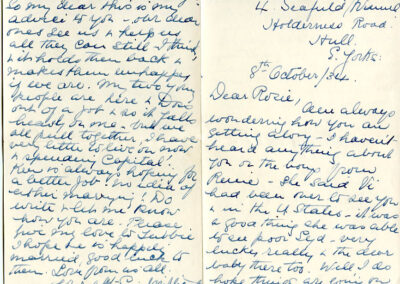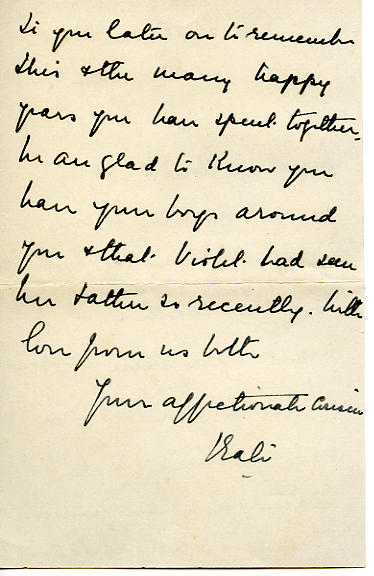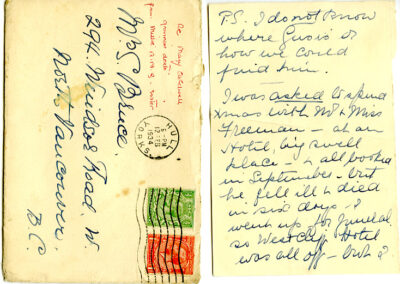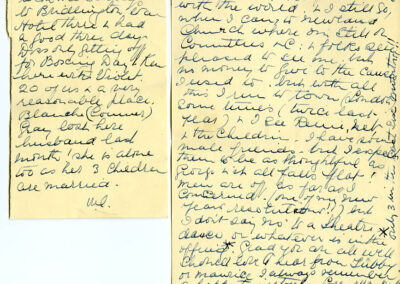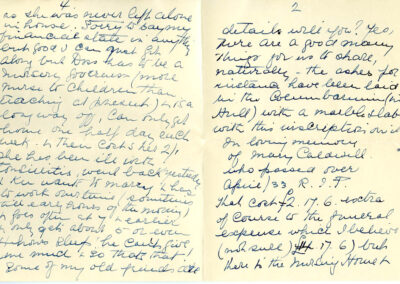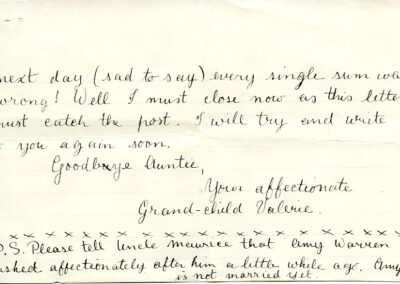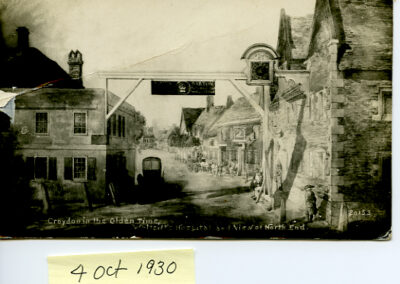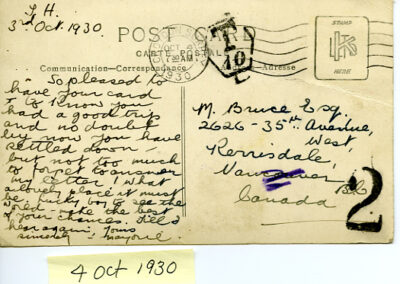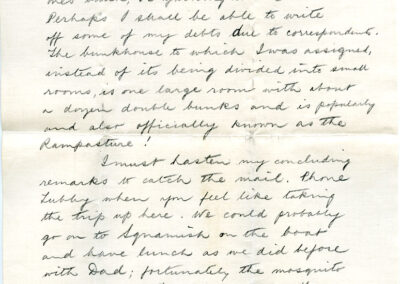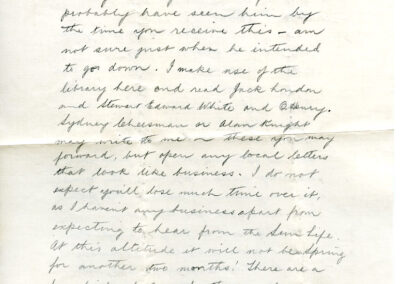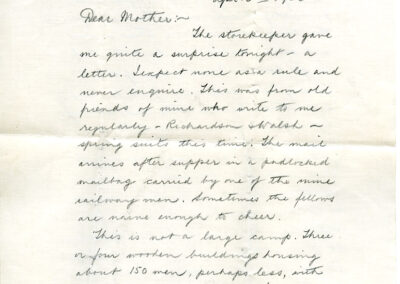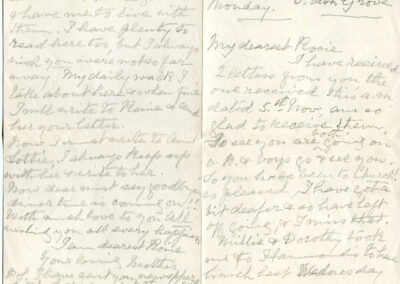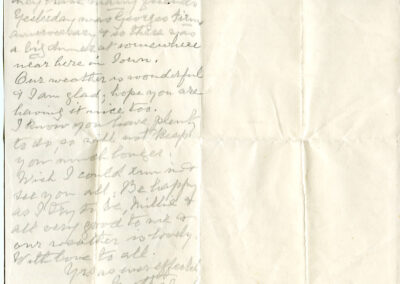
Pioneer Mine
1934-1938Who Went Where
By the late fall of 1925, just months after completing the agricultural program, the three boys had apparently concluded that farming was not their schtick. Maurice probably never held the illusion that it was, for I have found no evidence that he stayed with his brothers in Canada. My guess is that he headed home to England. However, Frank and Geoffrey gave farming a shot. They worked the harvest in Alberta that year but by late fall, they had jobs at Britannia Mines near Vancouver.
Mining Beats Farming
Geoffrey seems to have taken to the work for he went on to become a geologist. Frank too, held a life-long interest in geology but chose to continue working at Britannia and later Pioneer Mine in the British Columbia interior for some years. No doubt it was a matter of financial duress, for the depression was well underway by the early thirties.
Two Communities
Britannia was comprised of two communities. Britannia Beach was the site of the ore processing mill, the dock for shipping the ore and ferrying people to and from Britannia. The Upper Townsite was ground zero for this underground mining operation. It was located well up the valley from ‘the Beach’. A cog railway connected the two settlements. Each community had its own social life with tennis courts, pool, cafeteria, community hall and so forth. You will note from the pictures the heavy snowfall of that era., a far cry from today.
Ghost Town
As a teenager, my friend Dave and I would drive the rugged road to the upper townsite in Dave’s 1954 Austin A40. There, we’d spend the day, wandering the streets, poking into the long vacant houses and office buildings and pondering days gone by.
Archive: Canada 1928-1939
Moving On
It was1934 and jobs were hard to come by, but Frank Bruce needed work that would take him out of the gut of hell at Britannia Mines. He found it as purchasing agent at the highly lucrative gold operation, Pioneer Mine, near Lillooet, BC.
Origins of Pioneer Mine
Miner, prospector and amateur geologist Arthur Noel discovered the vein at Pioneer. He focused his attention on the placer finds of the Fraser Canyon at the mouth of Bridge River, tributary to the Fraser River. Placer mining had been ongoing throughout the Bridge River area since 1858. When California placer miners became disenchanted with the dwindling payloads there, they moved north to the Cariboo. Chinese miners took over and for a few more years, made a good living. Women from the Lillooet tribe were the most ingenious of miners. Letting themselves down into the waters of the creeks up to their necks, they felt around the crevices with their toes, grasping and retrieving nuggets.
Proposal
Frank, I suppose, got lonely though. In 1936, he wrote to Hester Spriggs, a girl he had dated back in Baie d’Urfé when he and his brothers attended McDonald College. Frank must have made discrete inquiries as to Hester’s marital status, then, discovering she was still single, he proposed. She wrote back and said yes! Frank was 36; Hester 29.
At age 29, this was likely to be Hester’s last chance for marriage. Her parents probably held grave doubts about Frank’s prospects, but they knew the man as a person of character, English bred and Hester’s last chance.
Hester
Hester was raised in a Quaker family in England. She was born into wealth. Her father and his father before him were in manufacturing. The family had cooks, nannies, house maids and chauffeurs, a ride-on steam train in the back yard and quality boarding schools. Then in 1915, her father did an extraordinary thing. The business was sold and the family packed up, said goodbye to their Quaker family and friends, and emigrated to Nova Scotia. There they bought an apple farm in the Annapolis Valley and put in the hard, physical labour to revitalize the neglected farm and make it a success, But success was not to be. World War I had devastated the apple market and the farm went broke. The Spriggs retired to Baie d’Urfé.
Hester was only nine when the family immigrated,. Thus, she had minimal exposure to farm life, as much of her time was spent at boarding school. At Baie d’Urfé, her life of privilege continued, including an extended trip to the continent with her sister Alison. And so, when Hester climbed aboard that CPR passenger car, destined for a life in the wilderness of British Columbia, she had experienced little to nothing of the real world. That was about to change.
A New Life
Hester packed her trusso and warm clothes, said a tearful goodbye to her siblings and parents and, alone for the first time, boarded the train for the five day trip to Vancouver. From there, she caught a Union Steamship to Squamish, perhaps a two hour sail from Vancouver, then rode the E&N Railway to Seton Portage, at the base of the mountain range upon which lay Pioneer Mine. For the final leg, it was a several hours ride by motor coach up a switchbacking, rough mountain road to reach Pioneer Mine. Frank was there at the bus stop, waiting to greet her in suit and tie. Arrangements were made for Hester to hurriedly change into her wedding dress, and before the sun had set that evening, the couple were married by the Mine Superintendent to the cheers of a dozen friends.
The couple retired to the cabin. Hester’s heart dropped at the sight of her new home. Frank gave her a tour, then said he had some quick errands to run in the town. When Frank returned, he had a man with him. Frank explained that the man had just arrived in Pioneer and had no place to stay. Would Hester mind if he camped on the floor for the night? The marriage never recovered.
Source for the mining info above is from the article “Gold in Lillooet by Arthur P. Woolacott, MacLeans Magazine, 1934 https://archive.macleans.ca/article/1934/3/1/gold-in-lilloet
Life at Pioneer
Proposal
Frank, I suppose, got lonely though. In 1936, he wrote to Hester Spriggs, a girl he had dated back in Baie d’Urfé when he and his brothers attended McDonald College. Frank must have made discrete inquiries as to Hester’s marital status, then, discovering she was still single, he proposed. She wrote back and said yes! Frank was 36; Hester 29.
At age 29, this was likely to be Hester’s last chance for marriage. Her parents probably held grave doubts about Frank’s prospects, but they knew the man as a person of character, English bred and Hester’s last chance.
Hester
Hester was raised in a Quaker family in England. She was born into wealth. Her father and his father before him were in manufacturing. The family had cooks, nannies, house maids and chauffeurs, a ride-on steam train in the back yard and quality boarding schools. Then in 1915, her father did an extraordinary thing. The business was sold and the family packed up, said goodbye to their Quaker family and friends, and emigrated to Nova Scotia. There they bought an apple farm in the Annapolis Valley and put in the hard, physical labour to revitalize the neglected farm and make it a success, But success was not to be. World War I had devastated the apple market and the farm went broke. The Spriggs retired to Baie d’Urfé.
Hester was only nine when the family immigrated,. Thus, she had minimal exposure to farm life, as much of her time was spent at boarding school. At Baie d’Urfé, her life of privilege continued, including an extended trip to the continent with her sister Alison. And so, when Hester climbed aboard that CPR passenger car, destined for a life in the wilderness of British Columbia, she had experienced little to nothing of the real world. That was about to change.
A New Life
Hester packed her trusso and warm clothes, said a tearful goodbye to her siblings and parents and, alone for the first time, boarded the train for the five day trip to Vancouver. From there, she caught a Union Steamship to Squamish, perhaps a two hour sail from Vancouver, then rode the E&N Railway to Seton Portage, at the base of the mountain range upon which lay Pioneer Mine. For the final leg, it was a several hours ride by motor coach up a switchbacking, rough mountain road to reach Pioneer Mine. Frank was there at the bus stop, waiting to greet her in suit and tie. Arrangements were made for Hester to hurriedly change into her wedding dress, and before the sun had set that evening, the couple were married by the Mine Superintendent to the cheers of a dozen friends.
The couple retired to the cabin. Hester’s heart dropped at the sight of her new home. Frank gave her a tour, then said he had some quick errands to run in the town. When Frank returned, he had a man with him. Frank explained that the man had just arrived in Pioneer and had no place to stay. Would Hester mind if he camped on the floor for the night? The marriage never recovered.
Source for the mining info above is from the article “Gold in Lillooet by Arthur P. Woolacott, MacLeans Magazine, 1934 https://archive.macleans.ca/article/1934/3/1/gold-in-lilloet
Documents
Docs 1930-1939-0658
±oM?v|¿Ù¶R¼ÞKÒnæëw·70§ £wû%. Ü?%¤RùWKXxßODKuII&Óy½ybãòn®Ú¬mpO0¹âU¤ ËñF#/Æß|8mÿqåÿ¬É?¯û×i®OéjýùpZräªXmi´³¸îWF&wKr_O¤`þߣ;Ãû¾A·àVËö±Z[mäݹ”{¹òa-ÔÒMè Tfàðýµ^X¦ò÷ËqË#5Åìð¹Io&-B»µäÔd “í|¥g^Æ.ï+âê÷Fçû¦cRßiW#i¥Ö¾WÐì.,Òy+éWKBñDZ,ñørH¤Wô=3Gh¬&T¸eî$¸¥”ú~£7§|S¥7 v*ÑÈsW¶’®ËPÿÿÕôµ¥(ÔÜò?¯+<ÊG$j¦Õè1UdÝBêz~}mè_(x9+qcÄr^Æ*Øù_ÊsSIgÃs[OØòv§ÙøOü¥~UòÓíí';HdH©pñ#©2uug7,IZEi~Xò¤7 s`ÉT¬îê N+kY¹µ6ÜøýmÕ|»å«÷ß(õ-Óêñ0ãn4?âËËjZPÔ4(kÒ #Ú[³:¡QÕ¿/ö¹2ý¬ EéZV£$¶2zh>6çiò,ܯ2ÌOó`TÞåÿ«Úܤ}:¯ ¨ñòej,Ú ~,*¿Iò·4QolQb¿I Û ¨øQ ñ*àZd).ÅZ$2$ìL7º·!ÿÖôûtþvßéÊÏ2É0ZÒUÀ=MiÇ$ ãKõûûNk}dDÖкÎÁc,¦ª¤¿l*Çdòßå{Åé°@ªçUeVØðlQAù{c£%´kg³LUCKÖ18zÒ¾©ÏüU~§¡~_=ø½Ô`²úù(Äò2Q×Ò¯2«É¸b¨¸´ÿ(kêÍo;Æ×_½¥Ã~ï,wåöqT,^DÎÚäýQm4ßNiAéÄLѧÂÔþô)Zâ¨OÑ?ÐêÒߪiñêÅÅÌr*K);±fVûÎk²v^]âÔÓÐÙ¨;°á,u -Z|<Ú¾_ I^6±mbèµç¨²¨.xx,ùXf¥þ^Ú^=õ²ä3DÓ¤ö¥Uä ¥YJl¿äâªá/Ë6I.Í¥³Û¼1Ë31^.< Ä·U<YÃh ¬ú.¯&¡´êýÏñS:Õø<ÙzXù-ìÑRØÚÙ´¼g/¿´}HÛº¶äC Æ Îôô#¹.E·Põê(q©{åË+Ù]ÙX #¬ÏJUÔ¥R¿´þ¯úäâIEñ4_.^ǧÜGmñبý2Pª(¥=6]¸ü+)°Å]VL䧾$¨òÄ?ÿ×ô§Â^½±~VyI¦^=òHoK5ø´¬==sÐ6HÉ,3 pcütâ¸ÚWü³¥ Æ30¬è«íñ §Úþ(ÙþFdÁÄ+ÊËmj}5å*¡¸!§#éO}UR÷ËþTmNËd¾¹};ê³Ê[ÄñiO8¨4®ëðWeåÊÏ$ZrÍÆEhÒ5 ¢0³0è¸7NÊòÝÚòµ¢´À|!:qá_WããÅý¬(Ù×ùw§Þ.¿GA~ MF èÔ!~Ù®ßgÙOÕü·¡£&A’ÀàDñ¬ªTR¢¨²ráÅ~ÖÙw«y=âO]Z4úÂ49DE@~Gá<O8R¥ÞEÒÕ"OC!X/U¢<%eõY+ð±Fç·ìâ~µå¶yý[4åå ä,²8-$«SNF¡¿à° /¢i÷Sé«wª»Â7öø¯1Å¢B¼Uª(KSFئ;®È#Ì^V»x´í.þÙåHCe¨q|Aeíp^H+Ç$()ÐÀ®ÀÛ”J ¤U©TË¿ÿÐô¤[·Ä^W.e#eø¶vzaU6-M |1BX½Ñ-,úÜCcÎ5fºãéím^gRÍþ[Ù2³É§Å$Õ1|ä(9QZ¹P?g%H°íNÿòêNF;õe$ O¨C ãñTWìà]+Ý˶÷^Ô¨.-:Õ *z¡§t?³û OìFÛäJTõ¿$Ì_}PÜB4¼ãRQ$?»gj|_P]>~L¬0ìªáC3óGí6¦/ghY 0V2T|*z¶ØLØØÓkhûïôcjÔvQ´ñ£Lª(ä´ A½*pªÿÑö(ÖÑw#ø×ÃÇTÂÆ0¼J±ÐF(ãNÛ^-mJ¬HX$w8U§µµxL/ 4M±¨*v§N1VÞ3Ƭ@ %AÛüÎA.kX¼¢F+U§NÝ°¡µ·T BªSîÅÐ@ÅKF§ÙªO*½Uì>[b«±V°%ÔÁ[«ybÿÒô¥¦êiüÇ*<Ë.c$»èÉ!v*âê+óÂqh¢ºá¶*ͬZ&¨ºs[ÎfzqafìÞ@ ®Ëû~/-¤Íùå²èm~Í)Gèë³ÕÕ?ºØrañ²¿ÙÃH´áuË'¾¹³Q5¢%Áø°Ñ[]tÙþ³HnÕbk´kMÐ(%îÿ¼ÿ’&ÚÎzT_M7OIØ[KÈÑ8ú¶ß°¸)mÚwôÛýWôdV÷]p2=¬ñFUK)¤®¢2ÕCðòåöpÒÚûo5Cqg-âYÜcxcÂ)f¨Øé?þ* ¾üÀÑ,µK½:æåÌ+I*Ù´,W÷RªÜ#`¥´væ;VÒ´ã X$ZÈâ*í.ÅZ&¦ª»,CÿÓô¨?ë×u,º&)²äW$WT6¡¨-±YêBúp/7Þ¦´¨Ûl*· V*Ú^¢)p>¬Ô*ZÓ?círøqE£aór][ÁõK[¨ÒXåhÈEæñýöËÇâ üØ ?ÇVVØj ¬0¶¿Ìÿ³ûX¢?Åp{[ ÓïÝ.«ÅVÝ’þðuMÛÿ#âÅm»Ï4ÛÚL`ÆñØÈÑ)Z#¯,VÛ>fAqe éå/R7Y^© Y·å’íÕ~VÔ_άÓEú2þ±,VÑ©æ æ6WèÇê0L¼þðûr%*^hKKHn&ÓoÎdá0dز¯Øæ>ÊU*ly§©gÑ4_²+-áqª[¬ÝÞYÙììÚöpè¢Ý[!jѾÊüX¡m®ßÎÒ¡Ño!d¤S/¦@”0UâjíÐvkÔæÕ °Ë·ñ$ÌÂKâ”ú¼@r¡³¤Uû¿ÛÆh¸õ«ù ¼Ñ7)%¯Øø[â#÷D_ yo&ÐöjÔnoVÙôè¤Ò5ÓÄj#ä9vû?ÝñÆÔ¬¼åªÜIkÇu+O¬o#· ËY@ñüTnMéú¼ãû8ÒÚjºôZ.réêÍ ((ü}ªñý®gÐçÀ¸1hZþúi$àXB|5M¹:ᥴM÷om¯Ù4{«ß¸«ÓHãÃ~x)m¾pº{×BÔÉ)DEV´j7®4¶«wæ]F IìãÐo®cFaõȽ/D uo§Ùû_µ-£-µyîty/Æx.c±°¸^2rôþjÛü<£æ¼¾Ï,KGV¸[¸mÿG�F^áBúIÌjI ðRðþÖ [JÏ53;Ä|½|Ëë8U?hpgoö~õ¸á¥µ?ññæÃËÚ J v¡_P1ø~&ûE[÷g-ªIæ«ÏÑ·õ¦ºgú¢d,»q#¢´úÊâK8'µXÕÞÚN<ãf(ÜK/%èx¶D¥]AÄ®ÃhhâvXÿÕôNMþ»~¼§ø.¢ý°!±(] PzåÝ¥¯ie%ü¼Õ~¯"1¡j¹ [©jþa¶o¡=÷+â%0¿u&NÇú¸ÒÚ§¯k¶×1Gk OzwYbNÀÒ?ÌQ¸4C?üijGyjã¬TJ&Ä)SRÃ2ÿÍÍ-¸ùÌnH%AëAÉYÙA;·XÔb§ö~-¢ÛUÖõŸѦô"Y+³$<%11ª¨bêf.áy/Ãé·?ØÀµ¼Ë楻hÿÃSz(Oï¾±VI@<ª[áøµùÍBòyfub8ërøIàäG¨à/üV¼¾ÞWüLº'VÖ®-SL"Ác2I¨<Ä5µn¶<²ÂÅ <˯´Ö¨¾^Ó¸uLg,JÀîÅð× ^°*½îµæo& ®-ÖÖdêV¬Aû ¡ßoáÅ+¡Ö5öÓã¸G"àÈV[a2rð,·Û¢?g¨ê:ö¿o,b K¸]£5dfRJÔ¯8ü'ö°-¡®|Ãæ%!òìÒ$5g Bv©©ê>½NñgÁÕ#óZhüºâ9yÄ_»FâZ¿ ³ªÍUkM{_Y63y~k{?Q=E§£d^_ä벯Ò·þ¶ M²,Uª©/&ÊiS.bÿÿÖôÅêkñµ>ü¤ýGÞÏ¢b§m²a+BàFP¿ö89Ù³Ì~í+ßs¥j>pi Í£À©¹.ìM)Ãè®n¨53ºyt¨Ó_ôXÖ~m#¥ ø/ÅÓáý¬UWO¾×%¼xoô¡mûªæ9ÒU$Wí-¢ÓfûXªiÄdi+OA× -á¬{$2?k·DÀ]¦Û־ݰªàÇÃïÀÔS¾4¶¹d®*µåMð*T÷ØãKkèiÔcJ¹Yh6ú1JªøàUýp«wj»,Cÿ×ô¥²(;ýùL¨³è¿¡ùä»q «®®Â®ÅRmOüWõ¿G}Wêþô=Pܽ^&èGÃËà 7kÕógÕí ÔÎb?]2ÐGZ|¼ë_³ðã²î7?eúäÍ-SìÓÇþì~©û)þVº2öãÍØDö¾¡W}OÛÁ[aû5컥ÏuùÖbHôý5nÇ#õw¸|/Ä¥Ïà~?ÛÇdn¨ËçqvÑØYØ^IÆâI¤õ8¾¡1 § y ÿÊÿ’]?úE±µ±Å}9fHåU%Äzö×À¿åc²¬¸<f ÅÓÓùg[Öøc#Ón¼ä¿gâÁJ£¦Íçÿ®F ¶|Öå2 < B~ݪüÄß ÝlÏù r´6ÚuÓ²×ìá ÑÑÉæÕ6µ´]+Ár²¹¦ |BÿyQöþÆ)@?1~±5®õdjF²H]Òñ! o·ð|_³ñãAwL¥Í¤¬~©ehº¢ÓÌâæ&’uQ96ý£”`¤¬{<$Êߣìe·YHpë)z*=F¤<£~ ¼¤ýãp^b÷ÀÑ ¸ ñÝJì±ÿÐôµ³T¹C66ø@¦ø *´Ë´F9qUÕÅ-Tââ®ÅZ8ªâÝ5¬¢Õ.JAUCÓáä<+×J?0}vX[L6áÓws/J `P ÝÈÿÉlÕ¯ÓÎ_Sc&ú<æ³G1/ËWÇx×]s+CZ$¼k}È8«òR=Ûááê+rÿ';.èXaüÃ.=i4¥J5x%Áì! & Î*Ý0«*êU¼UØ«±V©¸U¼UØ«±Wb®ÅZ®v*Ðé·ÓWcjѦD¥dñÿX~¼G5UËÿÿÒôÜèONùYæÉí×Tß$Æo º«]1W·´F*êbâ®Å]»up+X«©´IW Æ*íò%.®6®8cîWýaüi[ÚèÊ~xÑWSR³_ÑVÇé/äÛæ0QVøêDm@1¢qÔ¥¶øÑVj£¯øÑWÔëýÑ>;¯õÁEW5m ¯Í®4Uxþý



